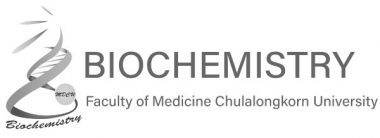
อ.ดร.พรชัย แก้วทรัพย์ศักดิ์
ตำแหน่ง: อาจารย์ประจำภาควิชา
อีเมล: Pornchai.ka@chula.ac.th
ความเชี่ยวชาญ:
- Molecular Biology and Chemical Biology
- RNA modification
- Nanopore sequencing
- CRISPR-Cas genome editing and detection
ชีวประวัติ
ผมเริ่มความสนใจในสาขาชีวเคมีในช่วงปริญญาตรี โดยทำการสังเคราะห์โมเลกุลเพื่อใช้ต่อสู้กับเชื้อ Helicobacter pylori ภายใต้ศาสตราจารย์ Danielle Dube การวิจัยนี้จุดประกายความหลงใหลของฉันในการผสมผสานระหว่างเคมีและชีววิทยา ในช่วงปริญญาเอกภายใต้การดูแลของศาสตราจารย์ Alice Ting ผมได้พัฒนาเทคนิคการทำฉลากเพื่อระบุอาร์เอ็นเอภายในเซลล์โดยใช้เพอร์ออกซิเดส งานวิจัยนี้ทำให้ผมมีความสนใจในด้านอาร์เอ็นเอมากขึ้น ผมจึงทำงานวิจัยหลังปริญญาเอกกับรองศาสตราจารย์ Meng How Tan โดยใช้เทคโนโลยีการจัดลำดับนาโนพอร์เพื่อการตรวจหาการดัดแปลงอาร์เอ็นเอจากอะดีโนซีนเป็นไอโนซีน ปัจจุบันงานวิจัยของผมครอบคลุมสาขาชีวเคมี ชีววิทยาระดับโมเลกุล และวิทยาศาสตร์การแพทย์ โดยเน้นที่การดัดแปลงอาร์เอ็นเอหรือเอพิตรานสคริปโตมิกส์ในทางการแพทย์ โดยเฉพาะอย่างยิ่งในไวรัสและเชื้อมัยโคแบคทีเรีย โดยใช้ข้อมูลการจัดลำดับนาโนพอร์ ชีวสารสนเทศศาสตร์ และเทคนิคระดับโมเลกุล ทีมของผมตั้งเป้าที่จะค้นพบบทบาท ความสำคัญและหน้าที่ของการดัดแปลงอาร์เอ็นเอในสุขภาพของมนุษย์
การศึกษา
ปริญญาเอก สาขาเคมีเชิงชีววิทยา Massachusetts Institute of Technology พ.ศ. 2560
ปริญญาตรี สาขาเคมีและคณิตศาสตร์ Bowdoin College ประเทศสหรัฐอเมริกา พ.ศ. 2555
รางวัลที่เคยได้รับ
2023 Runner-up in the 2023 Ben Barres Spotlight Awards
2020 Good Dissertation Award from National Research Council of Thailand
2013 Teaching assistant award from Chemistry department, Massachusetts Institute of Technology
2011 Semifinalist for Mcknight Prize in Chemistry from University of Texas-Southwestern
2011 ACS Award in Inorganic chemistry for student with superior work in the area of inorganic chemistry
2010 Hypercube Award for student with an interest in molecular mechanics and modeling
2009 US Chemical Rubber Company First Year Award for freshmen having outstanding performance in chemistry courses
2007 Scholar of Development and Promotion of Science and Technology
2007 Silver medal from 39th International Chemistry Olympiad, Moscow, Russia
ผลงานตีพิมพ์
- Patinya Akkhasutthikun, Pornchai Kaewsapsak, Pattaraporn Nimsamer, Pavit Klomkliew, Suthida Visedthorn, Pragwalai Chanchaem, Chinachote Teerapakpinyo, Sunchai Payungporn, Sutima Luangdilok. Cancer Research and Treatment 2024 56(2):455-463.
- Tram Anh Nguyen, Jia Wei Joel Heng, Yan Ting Ng, Rui Sun, Shira Fisher, Gokce Oguz, Pornchai Kaewsapsak, Shifeng Xue, Bruno Reversade, Adaikalavan Ramasamy, Eli Eisenberg, Meng How Tan. Deep transcriptome profiling reveals limited conservation of A-to-I RNA editing in Xenopus. BMC Biology 2023 21(1):251.
- Ariya Khamwut, Pavit Klomkliew, Watthanachai Jumpathong, Pornchai Kaewsapsak, Prangwalai Chanchaem, Pavaret Sivapornnukul, Kridsana Chantanakat, Nattanan Panjaworayan T-Thienprasert, Sunchai Payungporn. In vitro evaluation of the anti‑breast cancer properties and gene expression profiles of Thai traditional formulary medicine extracts. Biomedical Reports 2023 19(4):70.
- Pattaraporn Nimsamer, Vorthon Sawaswong, Pavit Klomkliew, Pornchai Kaewsapsak, Jiratchaya Puenpa, Yong Poovorawan, Sunchai Payungporn. “Nano COVID-19”: Nanopore sequencing of spike gene to identify SARS-CoV-2 variants of concern. Experimental Biology and Medicine 2023 248(20):1841-1849.
- Naphat Chantaravisoot, Piriya Wongkongkathep, Nuttiya Kalpongnukul, Narawit Pacharakullanon, Pornchai Kaewsapsak, Chaiyaboot Ariyachet, Joseph A Loo, Fuyuhiko Tamanoi, Trairak Pisitkun. mTORC2 interactome and localization determine aggressiveness of high-grade glioma cells through association with gelsolin. Scientific Reports 2023 13(1):7037.
- Nuttiya Kalpongnukul, Rungnapa Bootsri, Piriya Wongkongkathep, Pornchai Kaewsapsak, Chaiyaboot Ariyachet, Trairak Pisitkun, Naphat Chantaravisoot. Phosphoproteomic analysis defines BABAM1 as mTORC2 downstream effector promoting DNA damage response in glioblastoma cells. Journal of Proteome Research 2002 21(12):2893-2904.
- Pornchai Kaewsapsak, Naphat Chantaravisoot, Pattaraporn Nimsamer, Oraphan Mayuramart, Suwanan Mankhong, Sunchai Payungporn. In silico evaluation of CRISPR-based assays for effective detection of SARS-CoV-2. Pathogens 2022 11(9):968.
- Rungrat Jitvaropas, Oraphan Mayuramart, Vorthon Sawaswong, Pornchai Kaewsapsak, Sunchai Payungporn. Classification of salivary bacteriome in asymptomatic COVID-19 cases based on long-read nanopore sequencing. Experimental Biology and Medicine 2022 247(21):1937-1946.
- Chaiyaboot Ariyachet, Nattaya Chuaypen, Pornchai Kaewsapsak, Naphat Chantaravisoot, Depicha Jindatip, Saranyapin Potikanond, Pisit Tangkijvanich. MicroRNA-223 suppresses human hepatic stellate cell activation partly via regulating the actin cytoskeleton and alleviates fibrosis in organoid models of liver injury. International Journal of Molecular Sciences. 2022 23(16):9380.
- Tram Anh Nguyen, Jia Wei Joel Heng, Pornchai Kaewsapsak, Eng Piew Louis Kok, Dominik Stanojević, Hao Liu, Angelysia Cardilla, Albert Praditya, Zirong Yi, Mingwan Lin, Jong Ghut Ashley Aw, Yin Ying Ho, Yuanming Wang, Qixing Zhong, Jacki Heraud-Farlow, Shifeng Xue, Bruno Reversade, Carl Walkley, Ying Swan Ho, Mile Šikić, Yue Wan, Meng How Tan. Direct identification of A-to-I editing sites with nanopore native RNA sequencing. Nature Methods 2022 19(7):833-844.
- Naphat Chantaravisoot, Pornchai Kaewsapsak, Oraphan Mayuramart, Pattaraporn Nimsamer, Suwanan Mankhong, Nantinee Chomta, Rungnapa Bootsri, Isara Alee, Piriya Wongkongkathep, Sombat Treeprasertsuk, Sunchai Payungporn. COVID-19 active case findings based on self-collected saliva samples with CRISPR-Cas12a detection. Experimental Biology and Medicine 2022 247(14):1228-1234. Experimental Biology and Medicine 2022 247(14):1228-1234.
- Kean Hean Ooi, Mengying Mandy Liu, Jia Rong Moo, Pattaraporn Nimsamer, Sunchai Payungporn, Pornchai Kaewsapsak, Meng How Tan. A Sensitive and Specific Fluorescent RT-LAMP Assay for SARS-CoV-2 Detection in Clinical Samples. ACS Synthetic Biology 2022 11(1), 448-463.
- Natthaya Chuaypen, Umaporn Limothai, Pattapon Kunadirek, Pornchai Kaewsapsak, Patipark Kueanjinda, Nattachai Srisawat, Pisit Tangkijvanich. Identification and validation of circulating miRNAs as potential new biomarkers for severe liver disease in patients with leptospirosis. PLoS One 2021 16(9), e0257805.
- Kean Hean Ooi, Mengying Mandy Liu, Jie Wen Douglas Tay, Seok Yee Teo, Pornchai Kaewsapsak, Shengyang Jin, Chun Lee, Jingwen Hou, Sebastian Mauer-Stroh, Weisi Lin, Benedict Yan, Gabriel Yan, Yong-Gui Gao, and Meng How Tan. An engineered CRISPR-Cas12a variant and DNA-RNA hybrid guides enable robust and rapid COVID-19 testing. Nature Communication 2021 12(1), 1739.
- Jong Ghut Ashley Aw*, Shaun W. Lim*, Jia Xu Wang*, Yang Shen, Pornchai Kaewsapsak, Eng Piew Louis Kok, Chenhao Li, Boon Si Ng, Leah A. Vardy, Meng How Tan, Niranjan Nagarajan, and Yue Wan. Determination of isoform-specific RNA structure with nanopore long reads. Nature Biotechnology 2021 39(3), 336-346. (*co-first authors)
- Jiefu Li, Shuo Han, Hongjie Li, Namrata D. Udeshi, Tanya Svinkina, D. R. Mani, Chuanyun Xu, Ricardo Guajardo, Qijing Xie, Tongchao Li, David J. Luginbuhl, Bing Wu, Colleen N. McLaughlin, Anthony Xie, Pornchai Kaewsapsak, Stephen R. Quake, Steven A. Carr, Alice Y. Ting, and Liqun Luo. Cell-Surface Proteomic Profiling in the Fly Brain Uncovers Wiring Regulators. Cell 2020 180(2):373-386.
- Furqan M Fazal*, Shuo Han*, Kevin R Parker, Pornchai Kaewsapsak, Jin Xu, Alistair N Boettiger, Howard Chang, and Alice Y Ting. Atlas of subcellular RNA localization revealed by APEX-Seq. Cell 2019 176(1-2), 391-403. (*co-first authors)
- Pornchai Kaewsapsak*, David M. Shechner*, William Mallard, John L. Rinn, and Alice Y. Ting. APEX-RIP: Live-cell mapping of organelle-associated RNAs by combining proximity biotinylation with protein-RNA crosslinking. Elife 2017 14(6), e29224 (* co-first authors)
- Pornchai Kaewsapsak, Onyinyechi Esonu, Danielle H. Dube, Recruiting the Host’s Immune System to Target Helicobacter pylori’s Surface Glycans. ChemBioChem 2013, 14 (6), 721-726.
